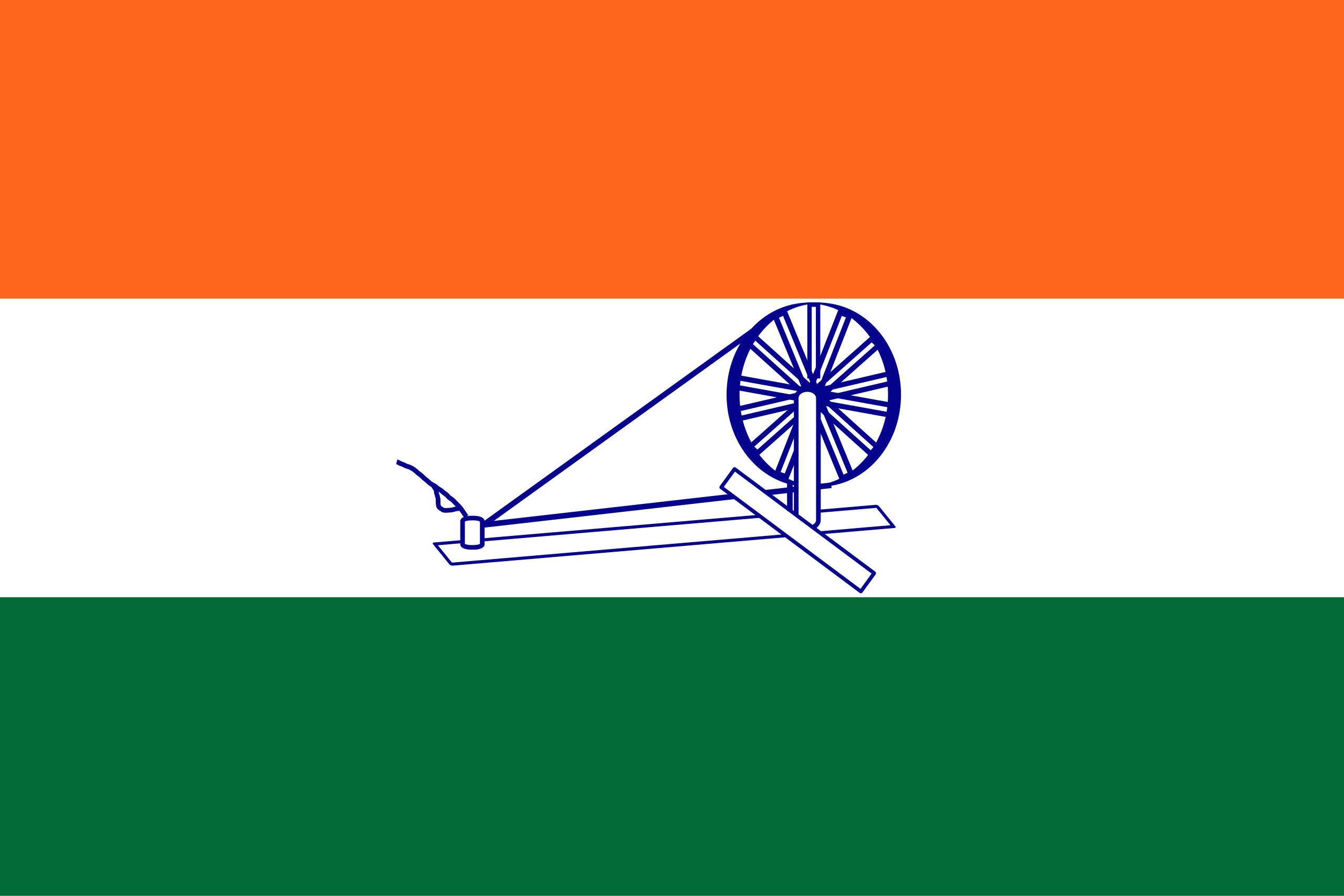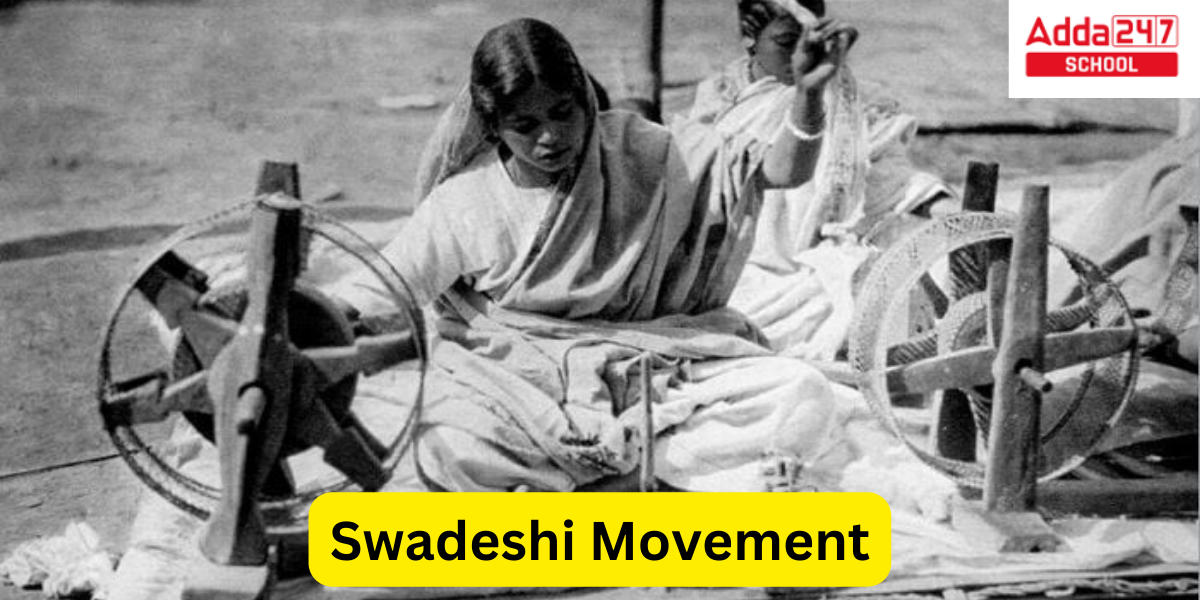Table of Contents
Swadeshi Movement
The self-sufficiency movement known as the Swadeshi Movement was a component of the Indian independence struggle and aided in the growth of Indian nationalism. Before the partition of Bengal by the BML Government was made public in December 1903, there was a great deal of rising discontent among Indians. In response, the Swadeshi movement was formally launched from Calcutta’s Town Hall on August 7, 1905, with the goal of reducing imports and promoting native manufacturing.
Swadeshi Movement in India Leaders
It was referred to as the soul of swaraj by Mahatma Gandhi (self-rule). Rich Indians gave money and land specifically for the Khadi and Gramodyog societies, which launched the manufacturing of cloth in every family, giving the movement its enormous size and shape. In order to make the hamlet self-sufficient and independent, it also added other local industries. The Indian National Congress exploited this campaign as a weapon in its struggle for independence, and on August 15, 1947, Jawaharlal Nehru unfurled a hand-spun Khadi “tricolour ashok chakra” Indian flag at “Princess Park” close to India Gate in New Delhi.

Swadeshi Movement: Partition of Bengal in India
- The British Raj executed a territorial rearrangement of the Bengal Presidency during the first Partition of Bengal (1905).
- The rearrangement divided the predominantly Hindu western portions from the predominantly Muslim eastern areas.
- It was announced by Lord Curzon, the Viceroy of India at the time, on July 20 and put into effect on October 16 but was reversed just six years later.
- With a Muslim majority in the east and a Hindu majority in the west, the Bengal Presidency was purposefully divided, according to the nationalists, in an effort to undermine Indian nationalism.
The West Bengali Hindus claimed that the partition would reduce them to a minority in a province that would also include the states of Orissa and Bihar. Even though Curzon emphasised that the programme would result in administrative efficiency, Hindus were horrified by what they perceived as a “divide and rule” strategy. The Muslim community was inspired to create its own national organisation along racial lines by the divide. Bengal was reunited in 1911 by Lord Hardinge to placate Bengali feeling in response to rioting caused by the Swadeshi movement in opposition to the strategy.
Swadeshi Movement: Aftereffects of Partition of Bengal
- Bengal was split into two halves by the government in December 1903.
- The official explanation was that Bengal, with a population of 78 million, was too big to manage, but the truth was that Bengal was the epicentre of the uprising, and British officials were powerless to quell the demonstrations, which they feared would spread throughout India.
- In August 1904, George Curzon, 1st Marquess Curzon of Kedleston, was reappointed Viceroy of India (1899–1905). He oversaw the division of Bengal in 1905.
- Bengal was split in two, with the western half being predominantly Hindu and the eastern half being predominantly Muslim.
- The Swadeshi movement was launched by this divide-and-conquer tactic.
- In 1911, the British relocated to New Delhi and unified Bengal.
- After Bengal was united, the Swadeshi movement took on a new significance.
National Symbols of India with Names List- राष्ट्रीय चिन्ह
Swadeshi Movement: Impact on History Timeline
- In order to further Indian nationalism, groups were formed in the 1850s by Dadabhai Naoroji, Gopal Krishna Gokhale, Mahadev Govind Ranade, Bal Gangadhar Tilak, Ganesh Vyankatesh Joshi, and Bhaswat K. Nigoni (the First Swadeshi Movement).
- Namdhari Sikhs in Punjab boycotted English clothing in 1871–1872. Ram Singh Kuka supported khap panchayats, vernacular education, hand-spun clothing (khaddar), and boycotted English clothing, courts, and schools.
- 1905–1917: The agitation was against Lord Curzon’s order for the partition of Bengal in 1905. Local clubs took on the form of revolutionary organisations. The Jugantar Party and Anushilan Samiti attempted to arm uprisings and assassinate infamous administrators.
- 1918–1947: Mahatma Gandhi boosted the cause by pledging to boycott imported goods on July 31, 1921, when he set fire to 150,000 English clothes at the Elpinstone Mill Compound in Parel, Mumbai. Khadi spinners were identified as liberation fighters by Mahatma Gandhi, who established Khadi spinning centres around the nation.
Indians began substituting their expensive domestic goods for British ones. British saw a 20% decline in its product sales as a result of the significant impact. To promote the usage and consumption of locally produced goods, from soil to sweets, the Lal-Bal-Pal trio arranged a number of samitis, and Bal Gangadhar Tilak oversaw Ganesh Utsav. V. O. Chidambaram Pillai, a prominent participant in the Swadeshi movement, gained control of the British India Steam Navigation Firm in Tuticorin in October 1906, transformed it into an Indian-owned shipping company, and gave it the name Swadeshi Shipping Company.
National Song of India in English and Hindi
Swadeshi Movement: Influence on India
- Rabindranath Tagore’s 1916 novel Ghare Baire (The Home and the World), which is set against the backdrop of the Swadeshi movement Along with many other intricate subjects, the book illustrates the dangers of ardent nationalism.
- The novel served as the inspiration for Satyajit Ray’s 1984 film Ghare Baire (The Home and the World).
- Following Gandhi’s speech at Elphinstone Fort in Mumbai, Indians promise to wear swadeshi khadi on a burning of English clothing in the 1982 Richard Attenborough film Gandhi.
- According to a 1999 article, Gandhi’s idea of Swadeshi had an impact on E. F. Schumacher, the author of Small Is Beautiful.
- In order to promote domestic handloom and khadi products, Prime Minister Narendra Modi observed India’s inaugural National Handloom Day on August 7, 2015.
- The date was chosen because the Swadeshi movement, which advocated avoiding imported items and solely using those created in India, was established on August 7, 1905.
Kangana Ranaut’s 2019 film Manikarnika: The Queen of Jhansi, which is based on the queen who bravely opposed the English in 1857, made great use of khadi (hand spun garments) made of cotton, brocade, and paithani to symbolise swadeshi culture. The historical lady knew how to make the fabric before she became the Queen.
Mughal Empire in India- History, Emperors, Period and Map
Subhas Chandra Bose Biography, History and Accomplishments



 UP, MP, CBSE Board Result 2025 Live Upda...
UP, MP, CBSE Board Result 2025 Live Upda...
 CUET UG Exam Date Sheet 2025 @cuet.nta.n...
CUET UG Exam Date Sheet 2025 @cuet.nta.n...
 NTA NEET Cut Off 2025, Expected Cutoff f...
NTA NEET Cut Off 2025, Expected Cutoff f...










